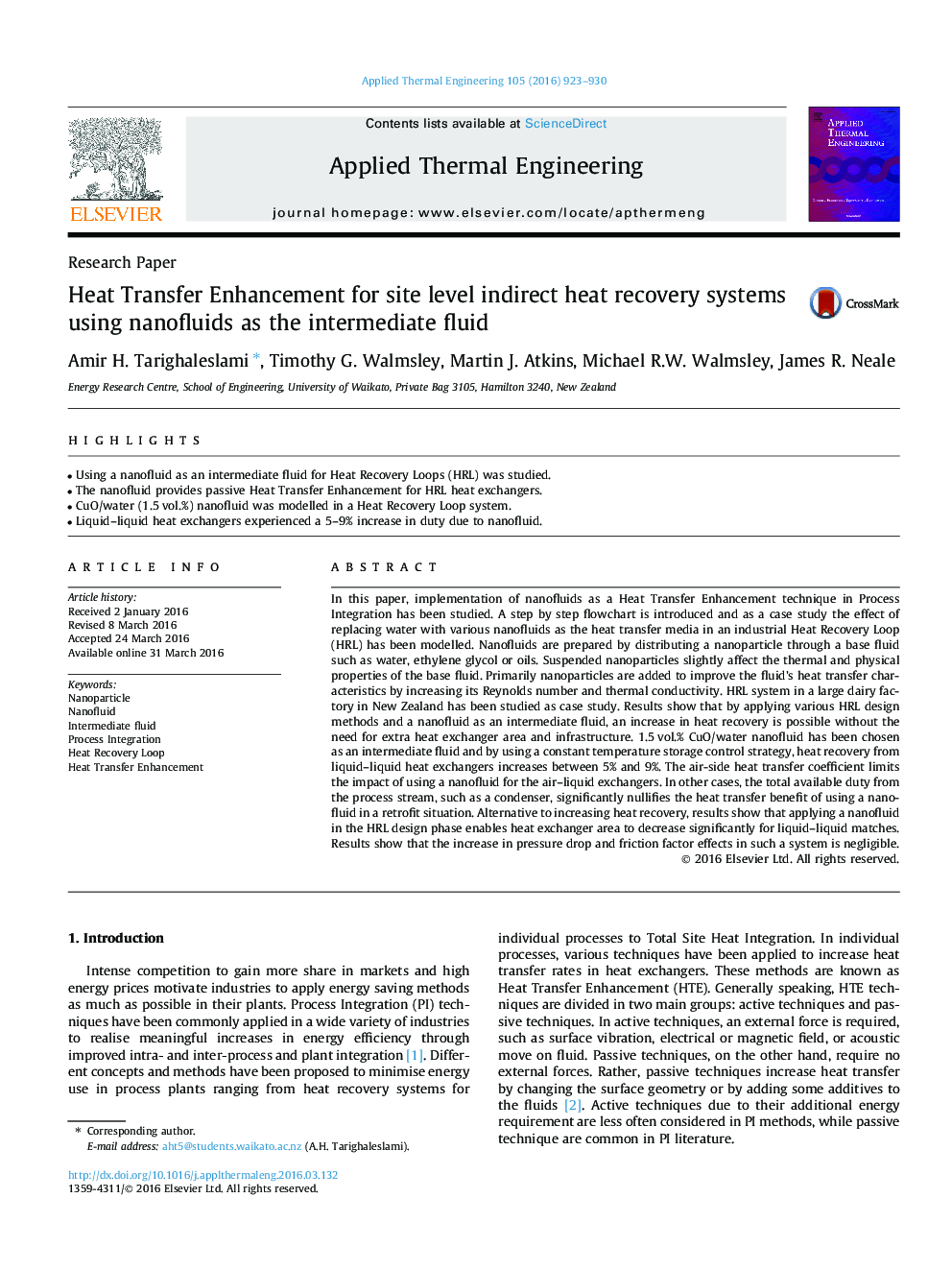| Article ID | Journal | Published Year | Pages | File Type |
|---|---|---|---|---|
| 644643 | Applied Thermal Engineering | 2016 | 8 Pages |
•Using a nanofluid as an intermediate fluid for Heat Recovery Loops (HRL) was studied.•The nanofluid provides passive Heat Transfer Enhancement for HRL heat exchangers.•CuO/water (1.5 vol.%) nanofluid was modelled in a Heat Recovery Loop system.•Liquid–liquid heat exchangers experienced a 5–9% increase in duty due to nanofluid.
In this paper, implementation of nanofluids as a Heat Transfer Enhancement technique in Process Integration has been studied. A step by step flowchart is introduced and as a case study the effect of replacing water with various nanofluids as the heat transfer media in an industrial Heat Recovery Loop (HRL) has been modelled. Nanofluids are prepared by distributing a nanoparticle through a base fluid such as water, ethylene glycol or oils. Suspended nanoparticles slightly affect the thermal and physical properties of the base fluid. Primarily nanoparticles are added to improve the fluid’s heat transfer characteristics by increasing its Reynolds number and thermal conductivity. HRL system in a large dairy factory in New Zealand has been studied as case study. Results show that by applying various HRL design methods and a nanofluid as an intermediate fluid, an increase in heat recovery is possible without the need for extra heat exchanger area and infrastructure. 1.5 vol.% CuO/water nanofluid has been chosen as an intermediate fluid and by using a constant temperature storage control strategy, heat recovery from liquid–liquid heat exchangers increases between 5% and 9%. The air-side heat transfer coefficient limits the impact of using a nanofluid for the air–liquid exchangers. In other cases, the total available duty from the process stream, such as a condenser, significantly nullifies the heat transfer benefit of using a nanofluid in a retrofit situation. Alternative to increasing heat recovery, results show that applying a nanofluid in the HRL design phase enables heat exchanger area to decrease significantly for liquid–liquid matches. Results show that the increase in pressure drop and friction factor effects in such a system is negligible.
